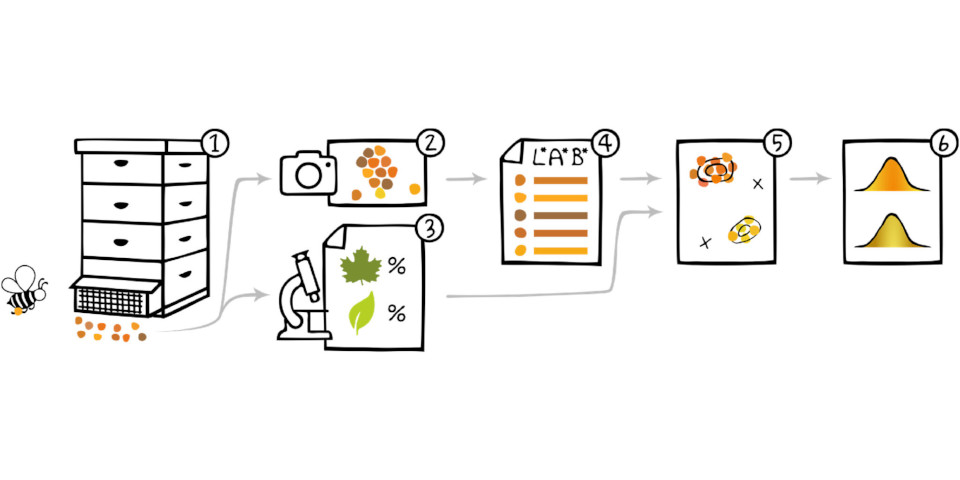Pollen analysis is crucial for studying plant-pollinator interactions, biodiversity, and environmental change. Traditional methods include microscopic examination and modern chromatic assessments. Color-based classification is appealing for its simplicity, but the significant color similarity between different plant species’ pollen grains remains a challenge.
In our latest study, we analyzed over 85,000 corbicular pollen samples from 30 major species, uncovering that color variation within individual species is perceptible to the human eye. However, the substantial color dispersion within a single pollen source makes relying solely on color impractical for accurate classification.
Our study achieved a correct pollen type classification rate of 67%, with accuracy varying from 0% for rare types with common colors to 99% for those with distinct colors. This highlights the complexity of pollen color and its impact on classification accuracy.
The broad color dispersion within species suggests the need for complementary methods to improve the accuracy of color-based pollen identification in biomonitoring. Advancements in camera-based monitoring systems are promising but require a nuanced understanding of pollen color diversity.
This research advances our understanding of pollen color variation and classification accuracy, emphasizing the limitations of color-based methods and advocating for complementary approaches. As we continue exploring pollen analysis, we aim for precision, innovation, and a deep respect for nature’s intricate colors.
DOI: 10.1016/j.ophoto.2024.100063










